MASS Meeting Notes for Zoom meeting on May 1, 2020

With us all locked down for the coronavirus pandemic, we tried Zoom for a digital meeting. We had good participation with, Keith, Phil, Harry (ending work at Ohare), Hank, Dave (mostly only audio), Beth & Chad, Dean (with a slight delay from technical problems) and myself. I was a little disappointed that when I shared my screen many people saw only a pixelated representation of what I was trying to show. I’ll see if our computer gurus can minimize our “technical difficulties” by trying a new method next time. But I appreciate the opportunity to share the recent events in space & astronomy. My sincere thanks to Keith who did a great job as “co-host” for the meeting.
I limited the meeting to 8 major topics because I knew there would be constraints.
Here they are,
1) NASA announces 3 companies selected to develop manned lunar landing vehicles – (Short announcement video) Just the day before on April 30, NASA announced contracts for Blue Origin, Dynetics, and SpaceX to develop plans for a manned lunar landers. The fixed price contracts are for the companies to report back the details of their plans in 10 months (Feb 2021). At that time, NASA will select 1 or 2 of them to actual produce their products to support the Artemis program. Blue Origin will lead the “National Team” to develop a 3 stage lander. Lockheed Martin builds the reusable Ascent Element, Northrop Grumman makes the Transfer Element that brings the lander from high to low lunar orbit, and Draper creates the descent guidance and flight avionics. This team gets the largest contract of $579 million. They would use the New Glenn rocket to reach the moon. The second contract went to Alabama based Dynetics which includes Sierra Nevada, Thales Alenia Space Italy (maker of the Cygnus cargo capsule) and ULA. Their lander is a squat low rider which has disposable side fuel tanks. They received $253 million. They would use the new Vulcan rocket. Lastly, SpaceX proposed a variant of their new StarShip vehicle that would use small thrusters mounted high on the ship rather than its powerful Raptor engines to prevent blasting of enormous amounts of lunar regolith into orbit. Astronauts would have to use a crane to reach the surface.They got the least money with $135 million and would use the Super Heavy rocket. I think these fixed-price contracts are a more nimble and cost effective turn for some of the overly reliant on SLS Artemis program decisions.
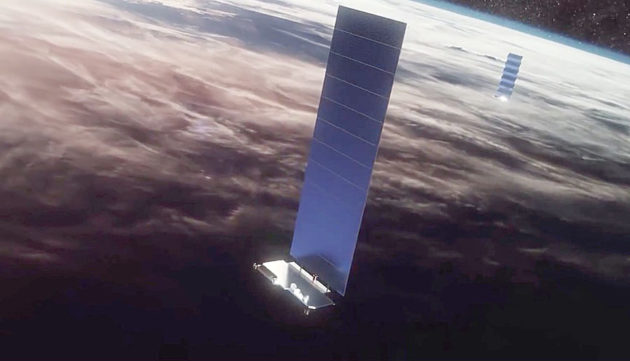
2) Sighting of a stream of Starlink satellites – Carol and I got to see a stream of 4 day old StarLink satellites on Sunday evening, April 26. They were impressively bright and close together. It took them 5 minutes to appear in the northwest near the crescent moon and Venus, pass only 20 degrees from the zenith and quickly disappear. With my announcement email, Harry and Dean also got to view them and they were impressed. I’ve got two StarLink predicting sites, findStarlink.com and Starlink – see a satellite tonight . But they aren’t always right and even Sunday’s sighting wasn’t exactly what they predicted. StarLinks are SpaceX’s high speed “Internet from space” constellation. SpaceX is launching almost 60 satellites with each launch every few weeks. Eventually they aim to put up 12,000 to 40,000 satellites but service should begin after only 27 launches and 1584 satellites. At that point, there will be 72 rings around the earth with 22 satellites in each ring. StarLinks weigh 500-575 lbs and move higher to their final 340 miles high orbit using krypton ion thrusters. Their final orbit is about 90 miles higher than the ISS but much lower than the 22,000 miles of most synchronous communication satellites that stay in the same spot in the sky. User terminals for the SkyLink system might use an antenna shaped like a large pizza box.
3) Hubble Telescope Celebrates 30 years in space – The Hubble celebrated its 30th year in space on April 24. To celebrate they released this photo and a short video explaining it. Hubble was last serviced in May 2009 and is beginning to show its age. 3 of its 6 gyroscopes have failed and it needs 2 or possibly 1 to continue accurately pointing. If any of its 4 scientific instruments fail, they can’t be replaced because the Space Shuttle no longer is flying. Shuttles serviced Hubble, in its 600 km (360 mile) orbit, 5 times (Dec 1993 to fix its flawed optics, Feb 1997, Dec 1999, Mar 2002, and May 2009 to perform upgrades). The telescope is expected to remain in orbit until 2035 but the last servicing mission attached a ring that an automated craft could latch onto so that it could deorbit it in a controlled manner. Hubble cost $4.7 billion when it was launched. Servicing and operations put its cost at $10 billion in 2010. The diameter of the mirror is 2.4 meters (7.9 ft or 95 in). Two other space telescopes hope to continue Hubble’s astronomical work. The James Webb Space Telescope (JWST) is scheduled to launch in March 2021 but the OMB only gives this date a 12% chance of happening due to some remaining technical difficulties. JWST has been a long time coming and its cost is now $8.8 billion. The Ariane 5 rocket that is to launch it from French Guiana is retiring soon. So it better get launched ASAP. JWST is a 6.5 meter (21 ft or 256 in) segmented mirror that will open up like an origami project 1 million miles from Earth at a Lagrange point. It will be a far infrared telescope operating at only a few degrees above absolute zero (minus 273 degrees C or minus 460 degrees F). It is not intended to be serviced, so all those expansion joints needed for deployment had better work! I’m thinking that guessing the date when JWST sends down its first picture could be our next MASS Prize contest. (?) Another high value project is the Wide Field InfraRed Space Telescope (WFIRST). This has a mirror the same size as Hubble. The mirror was donated by the National Reconnaissance Office because it was surplus. That shows how much money the military gets if they have a spare Hubble sized mirror! Because of progress made in materials research, the mirror only weighs 1/4 of Hubble’s. The White House has zeroed out the funds for WFIRST for the last 2 years. I guess they are trying to penalize the astronomers for being so delayed in getting JWST into orbit. But Congress keeps putting the money back into NASA’s budget. WFIRST is scheduled to launch in 2025 and has a field-of-view 100 times larger than Hubble. A single Hubble picture is only 1/10 the diameter of the moon. So Hubble would have to take about 100 pictures to image the full moon. WFIRST with its large view will be invaluable for finding interesting infrared objects in the sky and be a great compliment to the JWST. Comparison of Hubble, WFIRST & JWST.
4) Work on Mars Missions for 2020 Continues – NASA’s $2.1 billion Mars 2020 has been named “Perseverance“. It is similar to the current rover on Mars, Curiosity, but with some new features. One new feature is a small demonstration helicopter named Ingenuity. The copter, which weighs only 4 lbs and has a body the size of a softball, will make up to 5 short sorties of up to 5 meters in height and 100-1000 meter distance from the rover. With the Mars atmosphere only 1% as dense as Earth, it will be like flying at 100,000 ft. altitude. Fortunately, Mars gravity is only 1/3 Earth’s which will make getting the necessary lift a little easier. The 4 ft rotors will counter spin at 2400 rpm. NASA is considering another copter for the Dragonfly mission to Saturn’s moon Titan in the mid-2020s.
Launching between July 17 and Aug 5, Perserverance will land on Feb 18, 2021 (my birthday) with the same “7 minutes of terror” skycrane method as Curiosity did on Aug 6, 2012. The landing site is the 30 mi wide Jezero Crater on the edge of the Isidis Basin. This site charts the success of past Mars missions and shows the landing spots for Perserverance (labeled Mars2020) and another rover that is a collaboration of Europe and Russia, ExoMars. ExoMars has been delayed due to the coronavirus pandemic and will now launch in Aug-Oct 2022. Celestial mechanics has unforgiving laws. If you don’t launch in the July-Aug window of this year, you have to wait another 26 months for the next opportunity of a Mars close approach to Earth.
It looks like China will make this year’s launch of their Tianwen-1 (name from the “questions from heaven” poem) orbiter-lander-rover combo. China’s has announced 2 possible landing spots. They may take pictures from orbit before deciding where to land.
Getting back to Perserverance, it will carry a device called MOXIE to demonstrate the extraction of oxygen from the 96% CO2 Martian atmosphere. This will be our first attempt at “in-situ” resource utilization(making the resources at the destination, rather than carrying all the supplies with you). It will also have a ground penetrating radar to search for underground ice. Water ice would be another great source of oxygen for breathing and hydrogen for fuel. Perseverance will be the first step in a Mars sample return mission. The rover, which has improved wheels for travel up to 12 miles, will drill 43 sample cores up to 2 in deep and cache them on the surface for a future Mars Sample Return mission scheduled to launch in 2026. That mission will use a 2-stage solid rocket design from Northrop Grumman. First the Earth Return Orbiter will reach Mars and use its solar-electric thrusters to spiral down to a low altitude orbit. It will provide communications relay support for the Sample Retrieval Lander which will propulsively land in mid-2028. The Europeans will provide the fetch rover (with Perseverance as the backup if it still working) and transfer the samples to the Mars Ascent Vehicle (881 lb craft with 30-35 lb payload capacity) that will rendezvous in orbit around Mars in 2029 for return to Earth, landing in Utah in 2031. Cost of the sample return mission is $7 billion and it sounds really complicated.
Another 2020 Mars mission is the HOPE orbiter from the United Arab Emirates. They will launch on a Japanese H-IIA rocket. Their spacecraft was built in the US with the help of 3 universities and included 150 Emirati personnel. It intends to study why gases leak from the upper Mars atmosphere. Knowing that only 50% of the past Mars missions were successful, it will be interesting to see how well these 3 missions fare.
5) SpaceX News including Commercial Crew Launch – One of the biggest recent excitements is that the DM-2 mission (first crewed mission on an American rocket from American soil) is scheduled for May 27. If they launch on that day, it will be 3246 days since the last shuttle launch on July 8, 2011. But who is counting? It has been over a year, Mar 2019, since SpaceX launched DM-1 without crew to demonstrate that the Dragon2 capsule was capable of docking to the ISS. Boeing, the other Commercial Crew company, on the other hand had a pretty bad uncrewed mission that missed docking to the ISS. NASA said there are 61 issues that have to be corrected before they could launch crew. Boeing will refly another unmanned mission this Fall and probably a crewed mission sometime in 2021. We’ve come a long way since Boeing was awarded $4.2 billion to build their Starliner capsule and SpaceX was awarded only $2.6 billion for Dragon2. The higher amount to Boeing was justified that they were the more mature aerospace company and more likely to adhere to schedule. I don’t thing the American taxpayer got their money’s worth from that decision. The DM-2 mission (video and picture of the Falcon9 rocket with the NASA worm logo) will have 2 astronauts, Bob Behnken and Doug Hurley, both experienced shuttle astronauts. They were originally scheduled to spend only 2 weeks on ISS, but with all the delays and the fact that the US is down to just one astronaut, Chris Cassidy, on the ISS, their stay has been extended to 2 or 3 months. The limiting factor other than the capsule being only rated for 110 days in space, is that NASA at least a month to evaluate the mission before launching SpaceX’s first operational mission with 4 astronauts (2 SpaceX, 1 NASA and 1 Japanese) later this year. The new Dragon2 capsule will perform an autonomous docking to the ISS rather than the grapple with the Canadarm and berthing. This will limit the size of objects that can be moved from the Dragon2 to the ISS compared to the original cargo Dragon1.
In other SpaceX news, the company was the first one granted a contract to supply the Lunar Gateway space station in orbit around the moon. SpaceX will use a new vehicle called Dragon XL to perform that task as part of a new $3.1 billion supply program. The contract is fixed price, indefinite delivery and quantity service contracts which guarantee at least 2 flights during a 12 year period. NASA didn’t even consider Boeing’s bid because it was too expensive and technically inferior.
In the final SpaceX news item, the StarShip prototypes being built in Boca Chica, Texas, have been breaking during cryogenic testing but SpaceX still feels they will soon perform a 20 km high hop. The SN04 (serial number 4 prototype) build did successfully survive its cryo test on Apr 26. StarShip is the enormous upper stage capable of carrying up to 100 people or 100 metric tons of cargo. It has 3 vacuum Raptor engines and 3 sea-level ones. The first stage is called the Super Heavy and it has 35 Raptor engines that burn methane and liquid oxygen. Here is a picture that compares StarShip/Super Heavy to the Falcon9, Atlas 5, Soyuz rockets and 747 and 737 airplanes. Elon Musk’s aggressive schedule has a StarShip, funded by a Japanese billionaire and carrying 8 of his artistic friends, doing a loop around the moon in 2023.
6) Gravity Waves Detected from an Uneven Black Hole Merger – On April 18 scientists announced that on April 12, 2019, they detected a new type of event. The first 10 mergers in LIGO’s first two observing runs in 2015 and 2017 always had black holes of similar mass. Then just weeks into the third observing run in 2019 they detected a merger of an 8 and 30 mass of the sun black holes about 2.4 billion light years away. The third observing run was using 3 detectors (2 LIGOs in US and Virgo in Italy) and lasted from April 1, 2019 to March 26, 2020. It was cut short by the coronavirus pandemic but it includes 56 detections of merging black holes. This latest observation represents a big step forward in understanding the population of black holes. The use of gravitational waves represents a new window into the universe. With light, we will always be limited to only looking back to 380,000 years after the Big Bang when the cosmic microwave radiation was emitted because the universe was opaque to light before that time. But with gravitational waves we may have insight into the first seconds of the universe when it was going through its inflationary period.
7) DreamChaser Gets It’s Wings – DreamChaser ( link includes a nice 3 minute video of a cargo mission) is one of my favorite spacecraft. Now the first one has a name, Tenacity. It will be so cool when we see it landing on the runway at the Kennedy Space Center after sending supplies to the ISS. It is currently being built for its first mission in the Fall of 2021. It will launch with its wings folded like a bat hanging from a cave ceiling, under a fairing on either the Atlas5, Ariane5 or the new ULA Vulcan rocket. Attached to it will be the ShootingStar transport vehicle. It could carry up to 7 people but NASA will only use it now for cargo (12,125 lb capacity). It can be reused up to 15 times. One of its unique capabilities is that it could reboost the ISS. That is something only the Russian Progress capsule can do. I’m still a little uncertain how it does it. Dean thought that its maneuvering thrusters are used but I thought those would be too under powered to make much of a reboost. The original COTS1 cargo program has just completed with SpaceX finishing their 20th cargo supply mission with Dragon1. Northrup Grumman has already flown 2 Cygnus capsules for the COTS2 program, SpaceX will start using the new Dragon2 capsule and Sierra Nevada will use DreamChaser. Each company is guaranteed at least 6 supply missions under COTS2 between 2019 and 2024. Northrup Grumman only did 11 missions under COTS1 and supplied only about 2/3 the mass that SpaceX sent to the ISS. The Cygnus capsule is capable of carrying almost twice the mass of a Dragon capsule but it can’t return supplies to the Earth like Dragon can.
8) Axiom Space Wins Contract for a Commercial Module on ISS – On Jan 30 NASA announced a contract for Axiom to add several modules (node, orbital research and manufacturing, crew habitat, Earth observing) to the ISS starting in late 2024. Axiom would get the forward port of Node2(Harmony) and replace the PMA2 (Pressurized Mating Adaptor) and IDA2 (International Docking Adaptor) presently there. Axiom has a familiar face from NASA ISS operations with Mike Suffredini as their CEO. Their team includes Boeing, Maxar Technologies, also building the Power & Propulsion element for the Lunar Gateway, and Thales Alenia Space of Italy which built most of the pressurized modules for US segment of the ISS. The US plans to extend support for ISS until 2028 or 2030. The inflatable module, BEAM from Bigelow Aerospace, was added to the ISS in 2016 and will remain until 2028 as an extra storage volume. Bigelow looks to be filing for bankruptcy by laying off their entire work force. This is probably due to Axiom getting this agreement with NASA. Other companies will work with NASA for free-flying space stations but won’t need a port on the ISS. Axiom’s plan will eventually detach from the ISS and support 7 people. Nice short 2 minute video of assembly and separation from ISS. SpaceX will fly a private crew of 4 to ISS with Axiom in late 2021 for an 8 day stay. It’s good to see our aerospace companies cooperating in this manner.
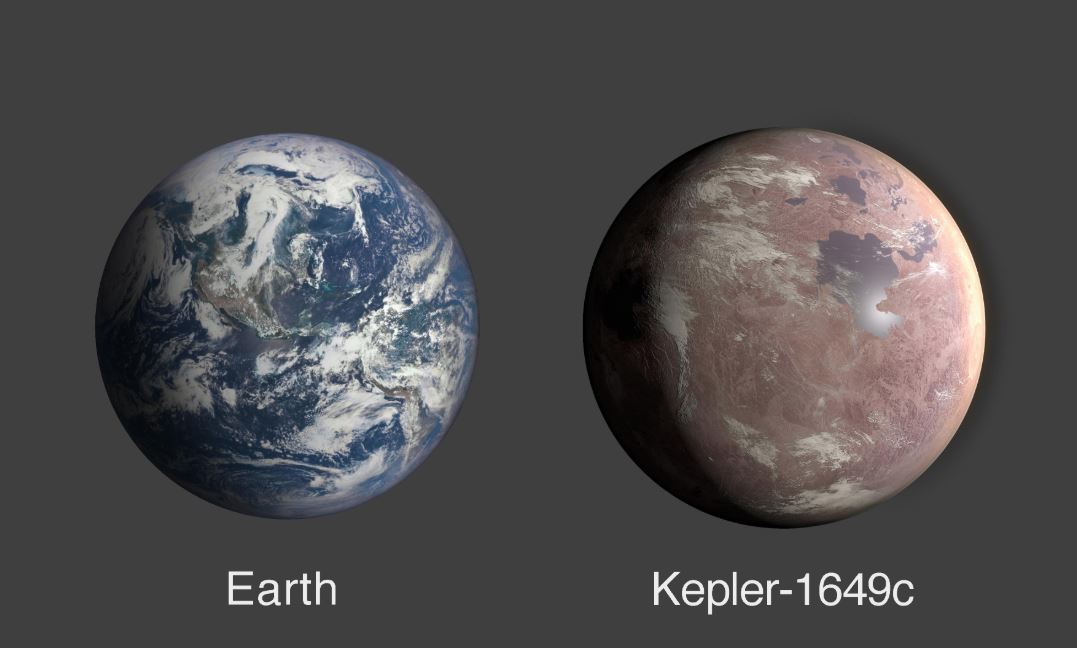
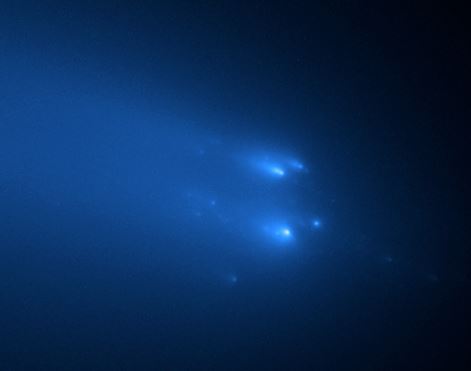
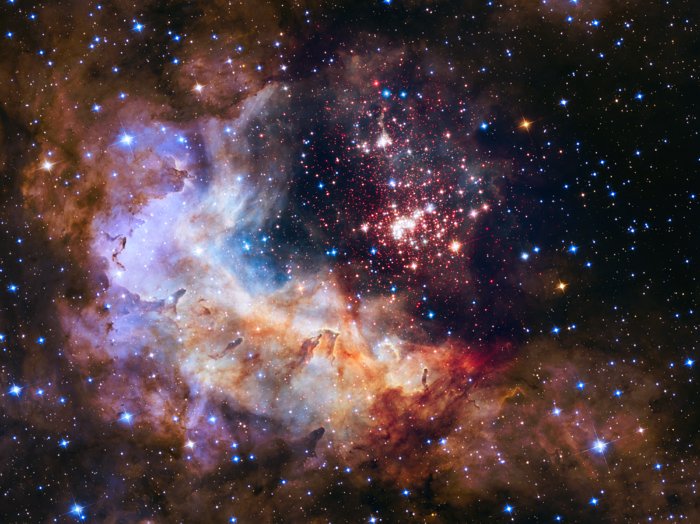
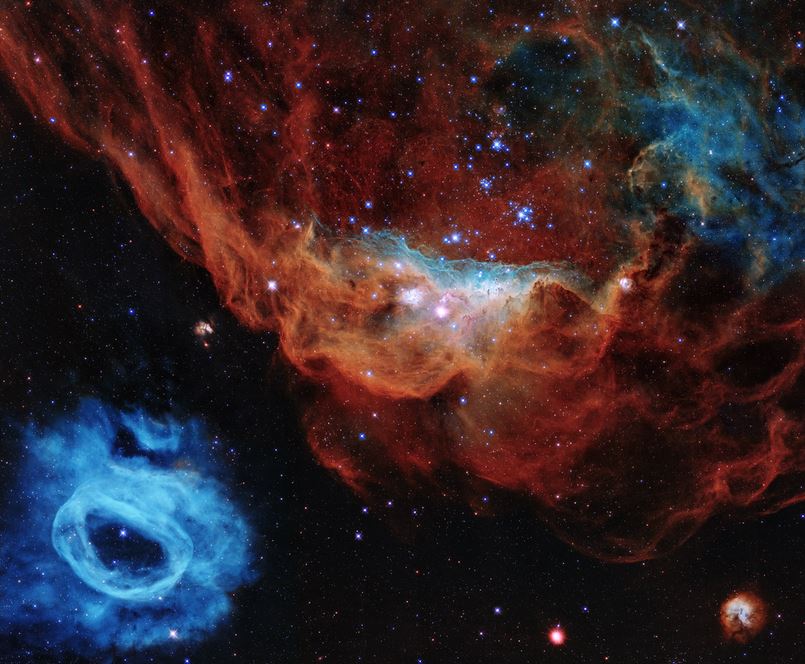

Recent Comments